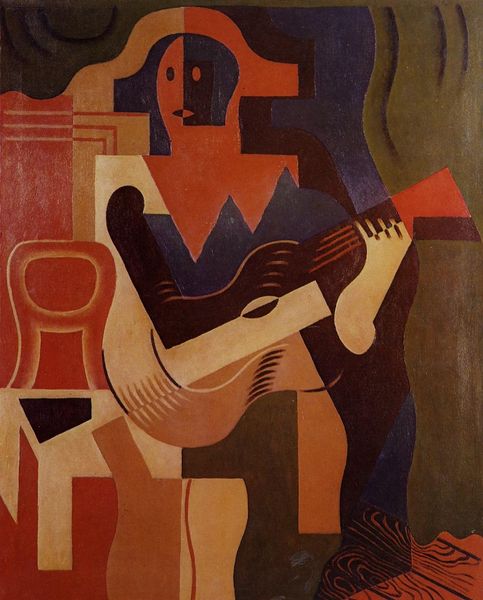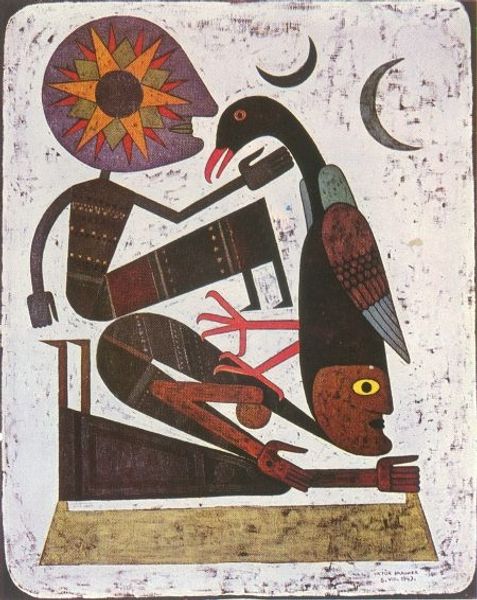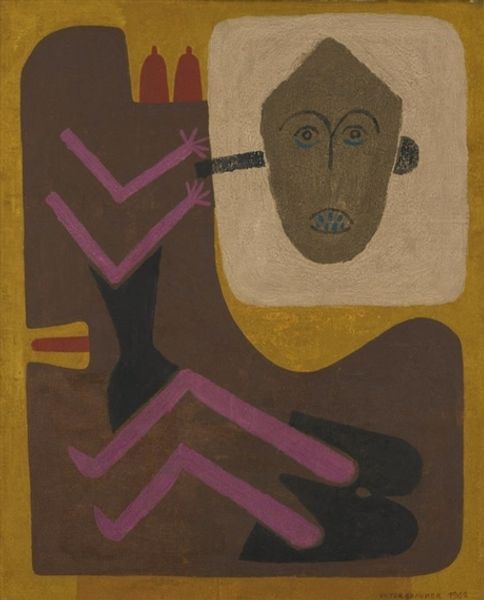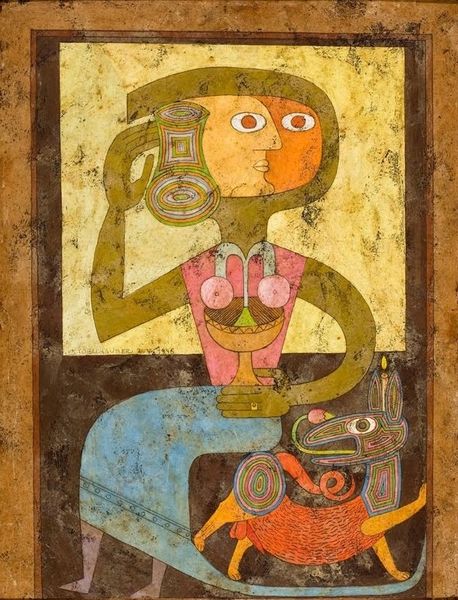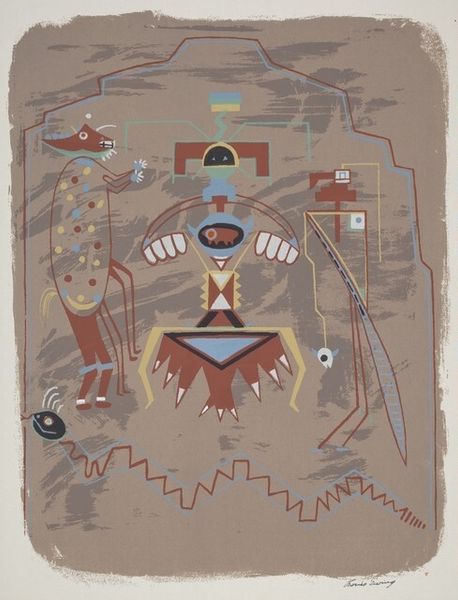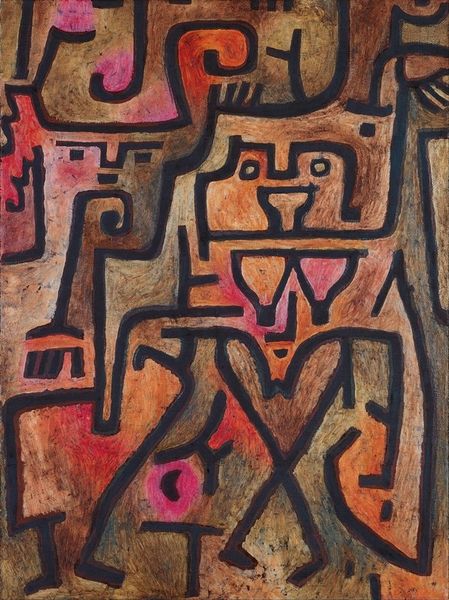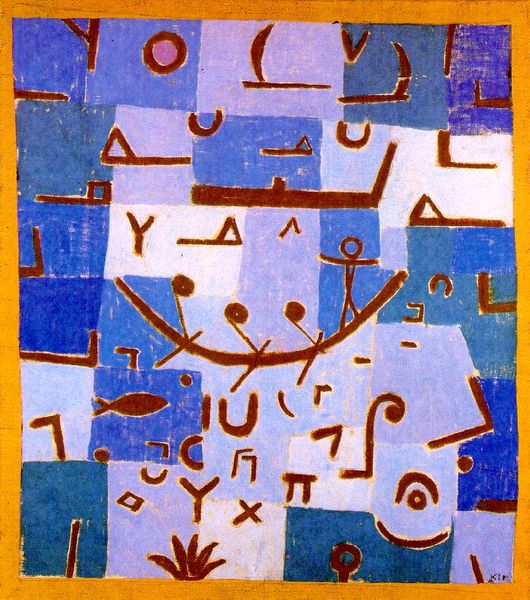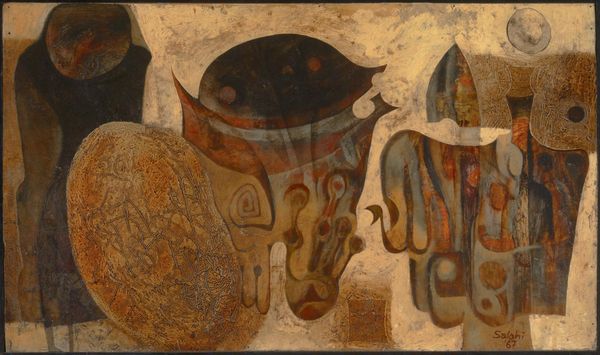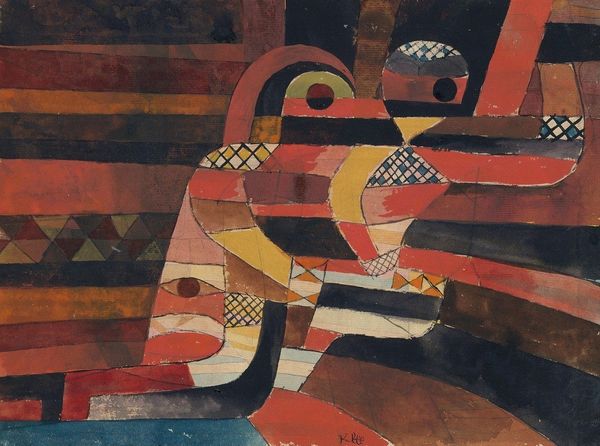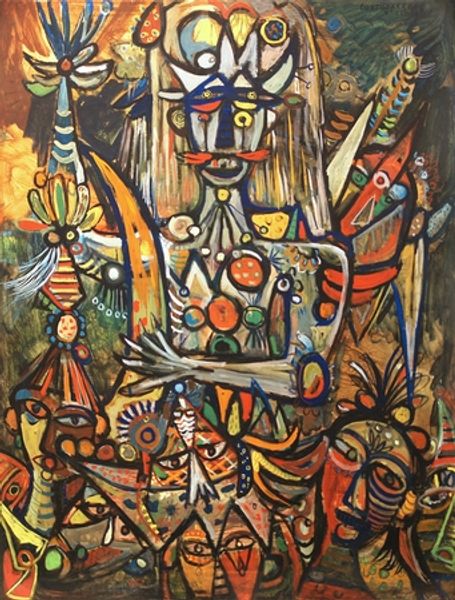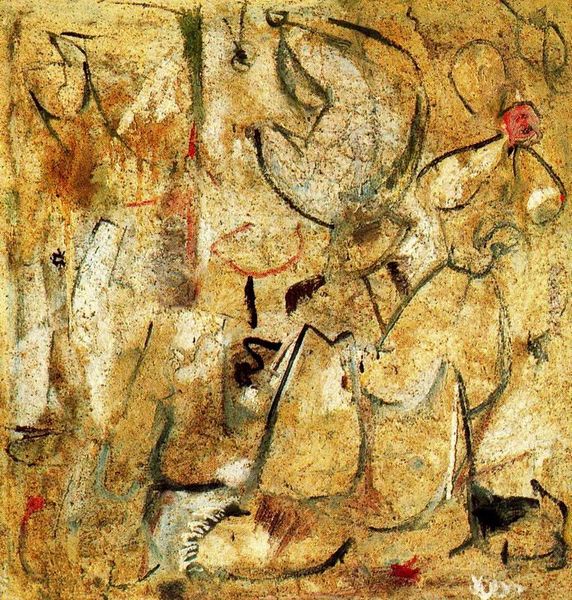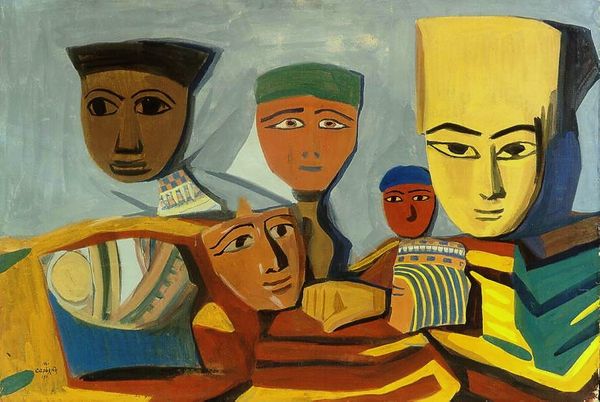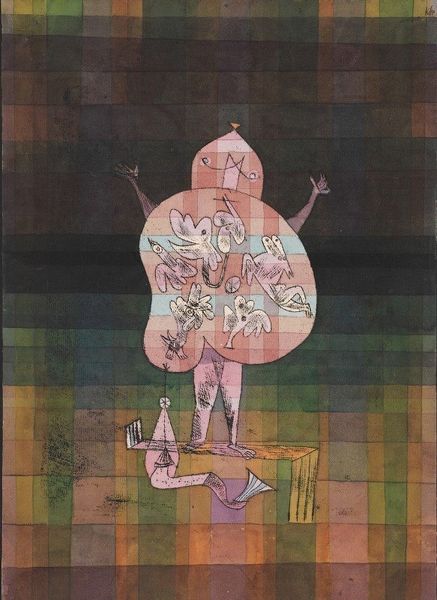
painting, acrylic-paint
#
abstract painting
#
painting
#
acrylic-paint
#
figuration
#
acrylic on canvas
#
art-informel
#
abstraction
#
surrealism
#
modernism
Copyright: Victor Brauner,Fair Use
Editor: So, here we have Victor Brauner’s "Arbre de la volupté," or "Tree of Delight," from 1961, an acrylic on canvas. It’s...certainly striking! All these figures, so abstracted yet suggestive…It's hard to put my finger on the overall feeling, beyond maybe...unease? How do you interpret this work? Curator: "Unease" is a potent first impression, and likely a very valid one. This piece is drenched in symbols, drawing from a deep well of cultural memory. What do you notice about the recurring motifs? Editor: Well, there are a lot of figures… or fragments of figures. Many have a single eye. And these repeated V shapes… What do they signify? Curator: Ah, the single eye, often associated with intuition, inner vision. Think of the Cyclops, or ancient Egyptian depictions. And the "V"…consider its possibilities. It could represent a vulva, suggesting fertility, or division, duality…Brauner was deeply interested in the occult, the symbolic weight of forms, and their potential to unlock subconscious truths. Does knowing this influence your interpretation? Editor: Definitely! It shifts the focus from mere visual unease to a sense of something deeper, almost ritualistic. Like the symbols are keys to understanding something hidden. Curator: Precisely. The “Tree of Delight” might be less about overt pleasure and more about a descent into the self, confronting both its creative and destructive forces through the language of symbols. Consider the palette and ground... what further feeling do those provide? Editor: Right, I see what you mean. Thank you! Curator: Of course! Symbols speak, but only if we learn to listen. It's about unraveling the layers of meaning. Editor: Absolutely, I am sure viewers can take a fresh look, and draw something new out of that piece by understanding that.
Comments
No comments
Be the first to comment and join the conversation on the ultimate creative platform.
